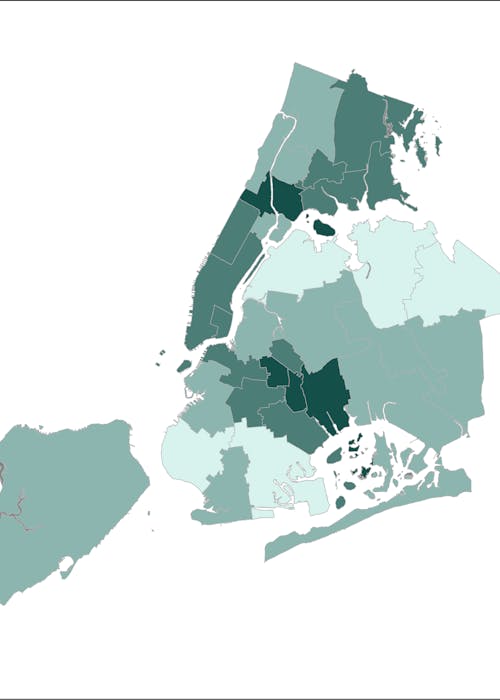

Remote Learning Engagement in NYC Public Schools
Digital Briefs
November 24, 2020
New York City schools switched to all remote learning last week as New York City saw a rise in COVID-19 cases. CCC analyzed data provided by the Department of Education from the Spring term – the last time all students learned remotely – to assess how the City might improve access to remote learning. These data show that students with disabilities, English Language Learners, and students in temporary housing as well as students in districts with high economic insecurity, were most at risk of disconnection and learning loss during the Spring, and are likely to again have some of the greatest obstacles to successful remote engagement during this second period of system-wide school closures.
The data from the Spring 2020 term measured remote interactions students and their families had with teachers and staff. An interaction could include: a student’s submission of an assignment, participation in an online chat, response to a call or email, or communication from the family. Albeit a low threshold for student engagement, let alone learning, these data reinforce the social and economic disparities prevalent prior to the pandemic.
Among the key findings in the infographic:
- On average over the Spring, only 85% of all students had a daily interaction with remote learning.
- In comparison, 80% of students in temporary housing, 82% of English-language learners, and 83% of students with disabilities had a daily interaction with remote learning.
- Interactions were lowest in school districts where economic and housing insecurity is great and the digital divide is wide such as in Mott Haven, Brownsville, Central Harlem, East New York, and Bedford Stuyvesant, where on average at least 20% of students each day had no interactions with remote learning.
Recommendations to address these immediate needs include:
- Concerted efforts to expand remote access by ensuring every child has a device, enabling Wi-Fi or at the least cellular data access in all shelters, creating hot spots in communities, and providing fast and easy-to-access technological support for families.
- Better outreach, communication and support from the DOE to English-language learners and immigrant families.
- More attention to how students with disabilities and their families receive their required services and supports remotely.
- Targeted efforts in the highlighted communities for device distribution, internet access, and tech-support, in addition to access to Learning Bridges programs and virtual youth services while schools are closed.
The infographic draws on data for remote learning attendance in Spring 2020, released from the NYC DOE to the City Council in October, as well as estimates from the 2019 American Community Survey.








